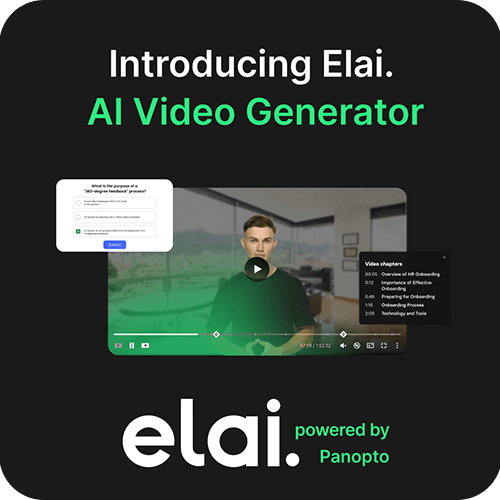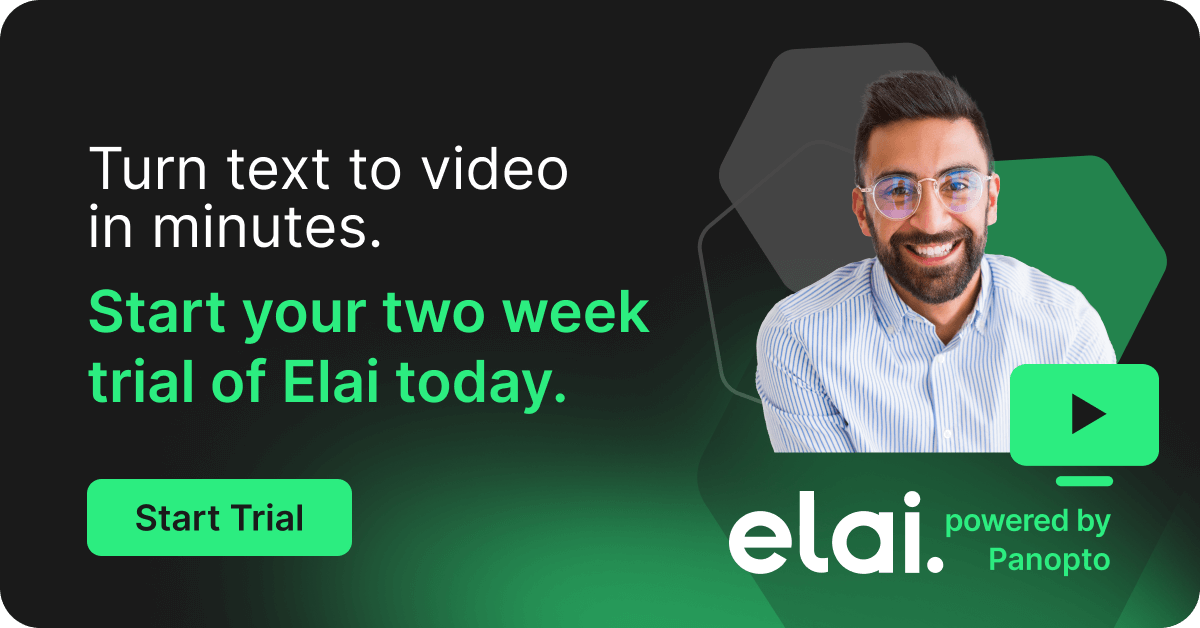- Uncategorized
From Department Projects to a Campus-Wide System: The University of Arizona’s Experience of Switching to Panopto
 At more than two terabytes of recording per hour and over 270 thousand hours of video delivered in a single year, the sheer volume of academic video produced and viewed daily at the University of Arizona is nothing short of impressive. But of course, UA didn’t simply decide one day to become one of the nation’s most prolific producers of lecture recordings.
At more than two terabytes of recording per hour and over 270 thousand hours of video delivered in a single year, the sheer volume of academic video produced and viewed daily at the University of Arizona is nothing short of impressive. But of course, UA didn’t simply decide one day to become one of the nation’s most prolific producers of lecture recordings.
Like most institutions, the University of Arizona came to uncover the potential value of adding lecture capture to the learning experience by small scale experimentation, with the university’s departments leading the way.
Always on the lookout for new tools to help students learn, many of UA’s schools and departments had independently made the decision to invest in lecture capture technology. In just a few short years, select lecture halls around campus found themselves awash in an array of lecture capture hardware — each featuring different appliances, different capabilities, different vendors, and different support requirements, depending on what technology any given department had invested in.
While managing each system had its own challenges, on the whole the technology was garnering interest. Lecture capture allowed faculty to record their largest class sessions and make them available to students using Apple’s Podcasting platform. Students, in turn, found the recorded presentations to be essential study aids, and safe with the knowledge that everything was being recorded, made it easier to more actively participate in classroom discussions instead of worrying about writing down every possible note.
As interest grew, faculty began looking beyond just their largest lectures, and began expressing interest in capturing discussion sessions, lab demonstrations, blended-learning techniques, and virtually every other lesson format. Yet as faculty sought out new opportunities to leverage the new video tools their departments had put into place, the same 3 challenges began appearing over and over.
The first stumbling block was one common to academic video — the hardware itself. Many of the university’s first lecture capture installations were hardware-based solutions, built around specialized, expensive recording appliances that resided permanently in lecture halls. This lack of mobility limited the usefulness of those first solutions — they offered faculty no means to record video from their offices or capture examples remotely in the field or the lab.
Of second issue was that, for students who took classes across multiple departments, having multiple lecture capture solutions meant an inconsistent experience. Students had to independently remember how to locate and play each video from each class. Video quality was highly variable as well — some of the systems included support for high definition video and multiple video sources, while others provided only a single, fixed camera in the back of the room to capture instructor, slides, and whiteboard.
Third, and perhaps most challenging of all, were the demands for support the departmental approach has placed for all of the university teams involved. Supporting the myriad of tools, to say nothing of managing all the various software updates and recognizing and addressing technical issues with each as they popped up, was an enormous task. By standardizing the systems across campus, they could better ensure that, when something did go wrong, that there would be more than one expert on campus to support it.
While these pilot installations facilitated experimentation and built some awareness around the practice of lecture capture, the University of Arizona was only just getting started. Taking all they’d learned and applying a proactive approach, Arizona’s CIO team sought to find a single solution that could not only solve the challenges the previous systems had experienced, but affordably and reliably scale up to meet the growing video needs of nearly 50,000 faculty, staff, and student users all across campus.
Finding a University Video Tool Fit for Everyone
As the equipment purchased by the pioneering colleges and departments began to age, the University Information Technology Services team assembled stakeholders from around campus to better understand how each department had been using video, what features faculty and students relied on, and what new potential uses instructors might have for the technology.
Believing video added significant value to their students’ learning experiences, it was at this time that UA campus leaders committed themselves to making lecture capture technology available in every one of the school’s more than 500 classrooms and lecture halls. To make good on that commitment, the team determined the school would need a software-based solution — one that would free the university from relying on specialized hardware and permanent installations.
With a software solution, UA hoped to leverage the laptops and desktops already on campus and in individual faculty’s possession to capture any kind of lecture, from formal classroom sessions to informal flipped classroom lessons or on-site demonstrations. Knowing that their campus information technology environment that was nearly 45% Mac, it was also key that any lecture capture software they selected would need to work well with both Windows PCs and Macs.
As Arizona dug into the wealth of lecture capture and video content management systems now available, the school discovered a wide range of technical features, implementation options, and new potential use cases to consider. Yet as the team sifted through the details searching for a flexible and reliable software-based architecture with comprehensive cross-platform compatibility, one solution quickly rose above the others — Panopto.
In Panopto, UA found exactly the video platform it had been looking for — versatile, easy-to-use software that made it possible to record, share, and stream video using the hardware the university already had. Panopto was easy to deploy across campus — the Panopto recorder could be quickly installed on virtually any computer, and Panopto’s web-based video library could be accessed in any web browser. Faculty members were thrilled to find Panopto integrated seamlessly with the university’s existing learning management system, Brightspace (formerly Desire2Learn).
From the largest institutions on down
As one of the largest public universities in the United States, the University of Arizona is able to record over two terabytes per week and share over 270 thousand hours of video in a single year. With software-based recording and video management tools, even the most ambitious video initiatives are made simple with Panopto. To learn how your institution can unite its lecture capture, flipped classroom, and faculty development initiatives, contact a member of our team today to request a free trial.




